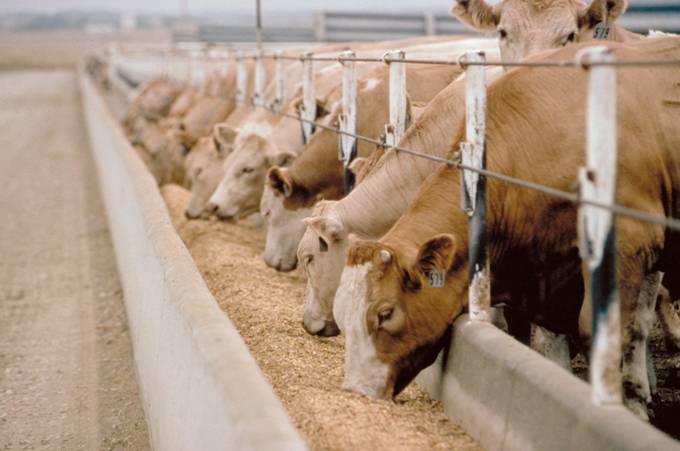
Agricultural News
Numbers Are Up as Latest Cattle on Feed Report Indicates More Cattle Moving Through Feedlots
Mon, 26 Sep 2016 11:23:14 CDT
 Mondays, Dr. Derrell Peel, Oklahoma State University Extension Livestock Marketing Specialist, offers his economic analysis of the beef cattle industry. This analysis is a part of the weekly series known as the "Cow Calf Corner" published electronically by Dr. Peel and Dr. Glenn Selk. Today, Dr. Peel analyzes the current state of the cattle market based on his reactions from the latest Cattle on Feed report.
Mondays, Dr. Derrell Peel, Oklahoma State University Extension Livestock Marketing Specialist, offers his economic analysis of the beef cattle industry. This analysis is a part of the weekly series known as the "Cow Calf Corner" published electronically by Dr. Peel and Dr. Glenn Selk. Today, Dr. Peel analyzes the current state of the cattle market based on his reactions from the latest Cattle on Feed report.
"I traveled across much of western Oklahoma last week to see large amounts of wheat acres planted and a significant number of acres emerged. Last week, NASS estimated that Oklahoma wheat planted acreage was at 19 percent, up from one percent the week before and higher than the 11 percent five-year average for that date. A significant additional jump in planted and emerged wheat acreage is expected in this week's USDA Crop Progress report. Early planted wheat is more vulnerable to disease and pest challenges and some producers are already reporting problems with armyworms, which can quickly wipe out small wheat. Both producers and lenders are reporting lots of interest in wheat grazing as the best possibility for returns on wheat acres. Stocker cattle prices will likely strengthen some in the coming weeks as wheat pasture demand develops, perhaps a bit ahead of the bulk of the fall run of calves in late October and November.
"The September Cattle on Feed report showed on-feed inventories at 101.5 percent of last year. August placements were 115.1 percent of last year with marketings at 117.6 percent of one year ago. Placements and marketings were distorted by two extra days this August compared to 2015. Nevertheless, both placements and marketings were up year over year. While feedlots are clearly moving more cattle through, the on-feed total is not growing on a year over year basis as marketings outpaced placements in August. The strong pace of marketings is confirmed with August cattle slaughter up sharply year over year. Heifer slaughter outpaced steer slaughter in August, up 13 percent from last year (on an adjusted daily average basis) compared to steer slaughter up 5.4 percent year over year. For the balance of the year, steer slaughter is expected to moderate, still up but by a smaller amount on a year over year basis, while heifer slaughter will continue sharply higher compared to last year.
"On a daily average basis, August beef production was up 6.9 percent compared to one year ago and is up 5.9 percent on a year to date total. Cattle carcass weights have been increasing seasonally for several weeks. Steer carcass weights were 903 pounds in the latest data, up 44 pounds from the seasonal low 16 weeks ago. This compares a 55 pound seasonal increase last year over the same 16 week period. This seasonal increase in carcass weights does not indicate a lack of currentness in the feedlots. Steer carcass weights currently are 13 pounds less than the same date last year and there are indications that feedlots have pulled fall marketings ahead in August and early September. Carcass weights will likely continue increasing to a seasonal peak in about another month but are expected to remain well below year ago levels. This will partially offset increased slaughter thus moderating year over year increases in beef production in the fourth quarter. It has been noted that cheap feed can encourage heavier carcass weights and indeed that is a danger. However, it is better stated that cheap feed encourages cattle feeding and as long as feedlots have incentives to market cattle aggressively, carcass weight increases beyond normal seasonal levels are not expected. Ample supplies of feeder cattle and favorable feeder prices should encourage feedlots to maintain a high turnover rate and avoid the wreck that resulted from extremely heavy carcass weights last year."
WebReadyTM Powered by WireReady® NSI
Top Agricultural News
More Headlines...



















